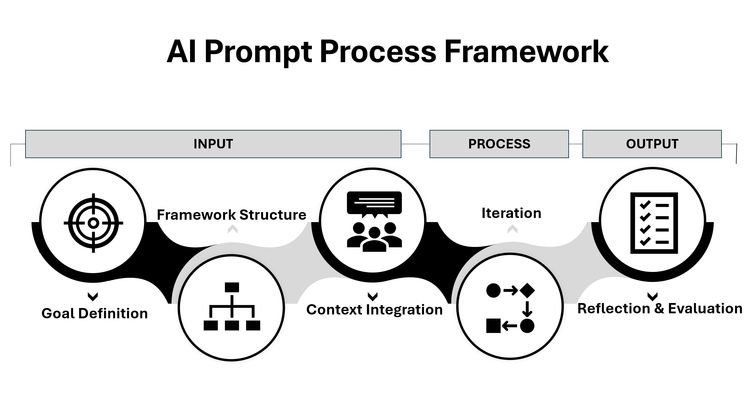Reframing Performance Improvement Plans: A Strategic Approach to Employee Development

In many organizations, underperformance is addressed reactively. Employees are given feedback—often focused solely on what they are doing wrong—and are left to interpret how to improve with minimal support. Occasionally, they may receive a few broad suggestions, but rarely is there a structured plan designed to help them realign with their role, regain confidence, and succeed.
This approach overlooks a critical truth: the employee was hired for a reason. They stood out among hundreds of applicants, demonstrated potential, and were considered a valuable addition to the team. When performance falters, the first question should not be, “How do we move them out?” but rather, “How do we get them back on track?”
A plan to get an underperforming employee back on track should embrace structure, transparency, and support through the use of a Performance Improvement Plan (PIP). Far from being a punitive measure, a well-executed PIP can serve as a strategic tool for professional development, performance alignment, and long-term retention.
A PIP Is More Than a Compliance Requirement
Too often, a PIP is treated as a procedural step before termination. But when implemented correctly, it becomes a valuable framework that empowers employees to succeed. It allows organizations to take a step back and re-invest in the talent they originally saw promise in.
A properly designed PIP does the following:
1. Clarifies Expectations
Performance issues often stem from a lack of clarity rather than lack of ability. The first step in any PIP should be to clearly outline the performance gaps and align them with the employee’s role, KPIs, and business objectives.
2. Breaks Down Goals into Actionable Milestones
Overwhelming an employee with a long list of improvements is counterproductive. Instead, goals should be broken into manageable, measurable milestones—weekly or bi-weekly targets that allow for incremental progress and early wins.
3. Provides Access to Targeted Support and Resources
Improvement requires more than willpower. It requires training, tools, mentorship, and sometimes a revisit of foundational knowledge. A strong PIP identifies and provides these support mechanisms from the outset.
4. Implements Consistent and Collaborative Check-ins
Regular progress meetings—ideally weekly—are essential. These sessions are not only for monitoring performance but also for fostering open communication, addressing challenges in real time, and reinforcing accountability on both sides.
5. Tracks Progress and Recognizes Improvement
Transparency in progress tracking is key. A shared performance tracker or documented meeting notes can help both the employee and manager stay aligned. Celebrating progress, even in small steps, helps build confidence and reinforces commitment.
The Business Case for PIPs
From an HR and leadership standpoint, a structured PIP is not just a performance tool—it’s a retention strategy. The cost of hiring and onboarding new employees is significant, both financially and culturally. By investing in a struggling employee through a well-structured improvement plan, organizations preserve institutional knowledge, promote a culture of support, and build long-term loyalty. Moreover, a thoughtfully executed PIP often has benefits beyond performance. It helps employees revisit the fundamentals of their role, clarify their value to the team, and develop skills that extend into future responsibilities.
The Employee’s Role in a Successful PIP
While managers and HR teams play a critical role in designing and guiding a PIP, the employee must also take ownership of the process. A PIP is a two-way commitment, and its success depends on the employee’s willingness to engage actively, seek clarity, and apply feedback.
Employees who succeed in a PIP typically:
• Approach the plan with an open mind and a willingness to learn
• Ask for clarity where goals or expectations are unclear
• Follow through on action items and deadlines
• Take initiative in scheduling check-ins if needed
• Reflect on feedback and demonstrate behavioral or results-based change
The PIP is not just a company’s investment in the employee — it’s also an opportunity for the employee to re-establish their value and grow professionally.
Key Questions to Ask Throughout the PIP Process
For the Manager:
• Have I clearly communicated what success looks like for this role?
• Are the expectations and goals achievable within the PIP timeline?
• Am I providing the tools, training, and support the employee needs?
• Am I documenting progress and offering both feedback and encouragement?
• Have I created a safe environment for open and honest communication?
For the Employee:
• Do I fully understand the expectations outlined in this plan?
• What do I need from my manager to succeed in this process?
• Where am I seeing progress, and where do I still need support?
• Am I applying feedback consistently and taking ownership of outcomes?
• What have I learned about my role — and myself — through this process?
Conclusion
A Performance Improvement Plan, when thoughtfully constructed and collaboratively executed, can be one of the most powerful tools for individual and organizational growth. It shifts the conversation from correction to development and repositions the underperforming employee as someone worth reinvesting in. In a business landscape where retaining skilled talent is more critical than ever, the way companies handle underperformance speaks volumes. With the right structure, mindset, and mutual accountability, a PIP doesn’t just solve a performance issue — it builds a stronger, more resilient workforce.





Member discussion